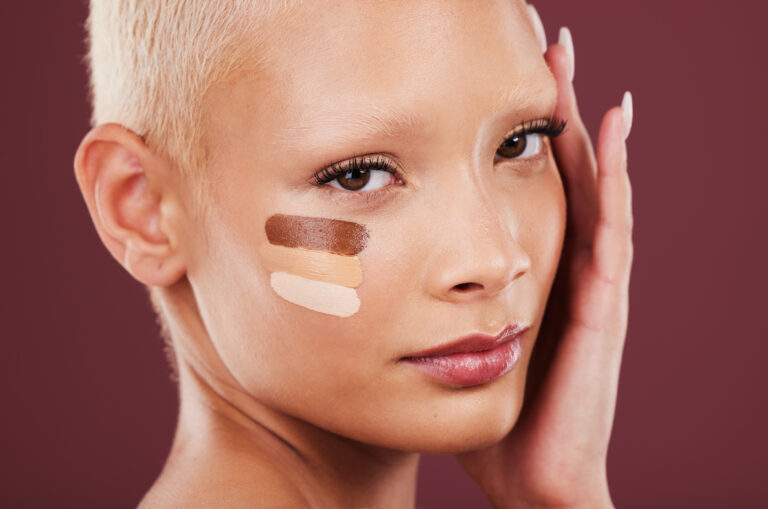Choosing the right foundation is essential for achieving a natural and flawless look. The wrong choice can lead to an uneven complexion, clogged pores, or an unnatural finish. In this guide, we will help you find the perfect foundation by focusing on key factors: skin type, undertone, coverage, and texture.
1. Determine Your Skin Type
Before selecting a foundation, you need to know your skin type:
- Oily Skin – People with oily skin should choose mattifying foundations that control sebum and reduce shine. Look for oil-free formulas with light to medium coverage and a matte finish.
- Dry Skin – Hydrating and luminous foundations with a creamy or liquid texture are ideal for dry skin. They provide a natural glow and prevent dry patches from being emphasized.
- Combination Skin – This skin type requires balancing formulas—products that mattify the T-zone while keeping dry areas hydrated.
- Sensitive Skin – Opt for hypoallergenic and dermatologist-tested foundations with minimal fragrance and preservatives to reduce the risk of irritation.
2. Identify Your Skin Undertone
For a natural look, your foundation should match your skin’s undertone. Undertones are categorized as:
- Cool (pink/blue undertone) – Your skin has a slightly pink or bluish tint. Foundations labeled “cool” or “C” are the best match.
- Neutral – Your skin doesn’t have a strong warm or cool undertone. Look for “neutral” or “N” shades.
- Warm (yellow/golden undertone) – Your skin has a yellow or golden hue. Foundations marked “warm” or “W” will complement your complexion.
How to Determine Your Undertone?
- Check your veins: If they appear blue or purple, you have a cool undertone. If they look greenish, you have a warm undertone. If they are a mix of both, you have a neutral undertone.
- Gold or silver jewelry? If silver looks better on you, you likely have a cool undertone. If gold suits you better, you have a warm undertone.
3. Choose the Right Coverage
Foundations come in different levels of coverage:
- Sheer Coverage – Ideal for everyday makeup, evening out the skin tone without covering imperfections.
- Medium Coverage – Perfect for those who want a natural look with more even skin tone.
- Full Coverage – Best for concealing scars, acne, and pigmentation spots. Often used for evening makeup and photoshoots.
4. Pick the Right Texture
- Liquid Foundation – The most popular option, suitable for all skin types depending on the formula.
- Cream Foundation – Great for dry and normal skin, offering good coverage and hydration.
- Powder Foundation – Best for oily skin, controlling shine and providing a matte finish.
- Stick Foundation – Convenient for travel and touch-ups, suitable for combination and oily skin.
5. Test the Color and Formula
When selecting a foundation:
- Apply it to your jawline or lower part of your face, not your hand, for the most accurate match.
- Test it in natural light to see if it blends seamlessly with your skin.
- Wait a few minutes as some foundations may oxidize and darken over time.
6. Additional Tips
- If you have acne-prone skin, choose oil-free and non-comedogenic foundations.
- For mature skin, hydrating formulas with anti-aging ingredients are recommended.
- Using a primer before foundation improves its longevity and smoothness.
- Set your makeup with a finishing powder or a setting spray for a longer-lasting effect.
Choosing the right foundation depends on your skin type, undertone, and desired coverage. Always test the product in natural light and ensure it does not clog your pores. With the perfect foundation, your skin will look fresh, natural, and flawless all day long.
